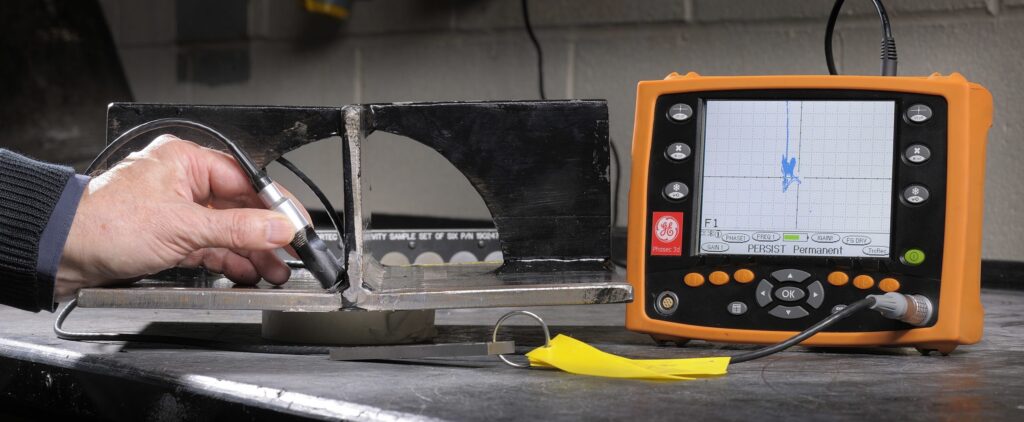
Following the non-destructive testing methods we’ve discussed earlier such as liquid penetrant testing (LPT), magnetic particle testing (MPT) we arrive at another method which is eddy current testing (ECT) also very dependent on material permeability and its composition if alloyed or welded.
ASTM standards related to eddy current testing (ECT) such as ASTM E309 and ASTM E243 establish guidelines for the application of this non-destructive testing method in various industries.
These standards cover procedures, equipment calibration, and acceptance criteria, ensuring a standardized and reliable approach to detecting defects in metals.
Performing eddy current testing involves several key steps:
1. Set up the eddy current testing instrument with appropriate probes and calibration standards.
2. Calibrate the equipment to ensure accurate and reliable results. This involves adjusting settings to account for material properties and probe characteristics.
3. Prepare the metal surface by cleaning it from any contaminants that could interfere with the test.
4. Place the eddy current probe in contact with or close to the surface being tested. Adjust probe lift-off, if necessary, to maintain a consistent distance.
5. Move the probe systematically over the material, following a predetermined pattern. This allows for comprehensive coverage of the area of interest.
6. Collect and analyze the data generated by the eddy current instrument. Look for anomalies or variations that could indicate defects in the material.
7. Interpret the findings based on the calibration and acceptance criteria. Determine whether any detected signals represent defects or other material conditions.
8. Document the testing process, including equipment settings, calibration details, and results. Provide a clear report on the condition of the material, indicating any identified defects.
9. Verify the results through additional testing such as Magnetic Particle Test or Liquid Penetrant Test or complementary methods to ensure accuracy.
Following these steps helps ensure a thorough and accurate eddy current testing process for detecting defects in metals. Thank goodness its Friday here in Malaysia, looking forward to the weekend.
Cheers 🥂 MFR